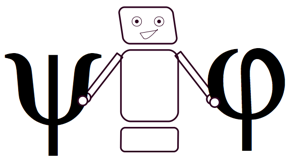Description
In a foreseeable future, humans and robots are set to act together and even to collaborate. Service, assistant or teammate robots are actively considered as possible applications. In this context, collaborating shall then not be tied to one single, specific interaction. All the agents concerned, both the human AND the robot, will have to build and to maintain, co-constructively, and as long as necessary, the collaborative process and relationship that come along with the task, thus allowing its joint execution. Such a process must be flexible, adaptable enough, so any of the agents, human or (even) robots, could make mistakes, fail locally, speed up or slow down, change their "mind", modify their decisions, etc., along the way, without undermining the interaction. Considerable work is currently ongoing, addressing those points and contributing to make this interaction easier and smoother; and we take our part of it. While this work has led to some progress, raised relevant questions and proposed some practical solutions, a solid and comprehensive theoretical framework has yet to be developed.
This is the way we are aiming to orient our research. We strongly believe that a human agent should be able to engage into an interaction with a robot in a natural way. That means with some social references she is familiar with, that she knows how to use and to deal with, and that are those she would use in a usual interaction with another human. Systematically identifying these references, understanding how they work together, adapting and integrating these social skills to the robot are the root constituents of the project JointAction4HRI (Joint Action for Human-Robot Interaction).
The JointAction4HRI project will address this goal through three objectives:
- Identifying the elements (and their interactions) that allow the establishment and maintenance of mutual understanding between a human and a robot in a collaborative task
- Modeling the notion of commitment that structures the relationship between two interacting agents
- Elaborate and test robotics architecture design for collaboration with humans
Far beyond the "simplistic" anthropomorphic appearance or the "naive" human-mimicry that we could implement to the machine, what matters to us here are the key components and mechanisms underlying joint action, their informational content (relatively to the common ground in terms of general knowledge, acquired previously and during the task itself), and how they are linked together, temporarily, hierarchically and meaningfully. Our ambition is to contribute, at the most fundamental level, to the identification and characterization of the ingredients required for the successful realization of a collaborative task.
It proposes an original consortium composed of researchers from a philosophy laboratory (Institut Jean Nicod), a psychology laboratory (CLLE), and a robotics laboratory (LAAS). Each has contributed in their respective discipline and for several years to research in the joint action domain. By bringing their complementary expertise together, JointAction4HRI will foster the development of an integrated theoretical framework.
Expected benefits are obvious from the perspective of service or entertainment robotics development. But we can envision broader benefits. Thus, we expect that joint attention modeling will give us cues to help the evaluation and support of children with developmental disorders (e.g. autistic children). Confronting the roles of commitments in human-human interaction and in human-robot interaction should also shed new light on the current philosophical debate about commitments in joint action, helping to identify more precisely their essential properties as well as the nature of the social norms and emotions that ensure their efficiency. Finally, our research should lead to a precise characterization of the elements necessary to manage mutual understanding between agents in cooperative situations.



